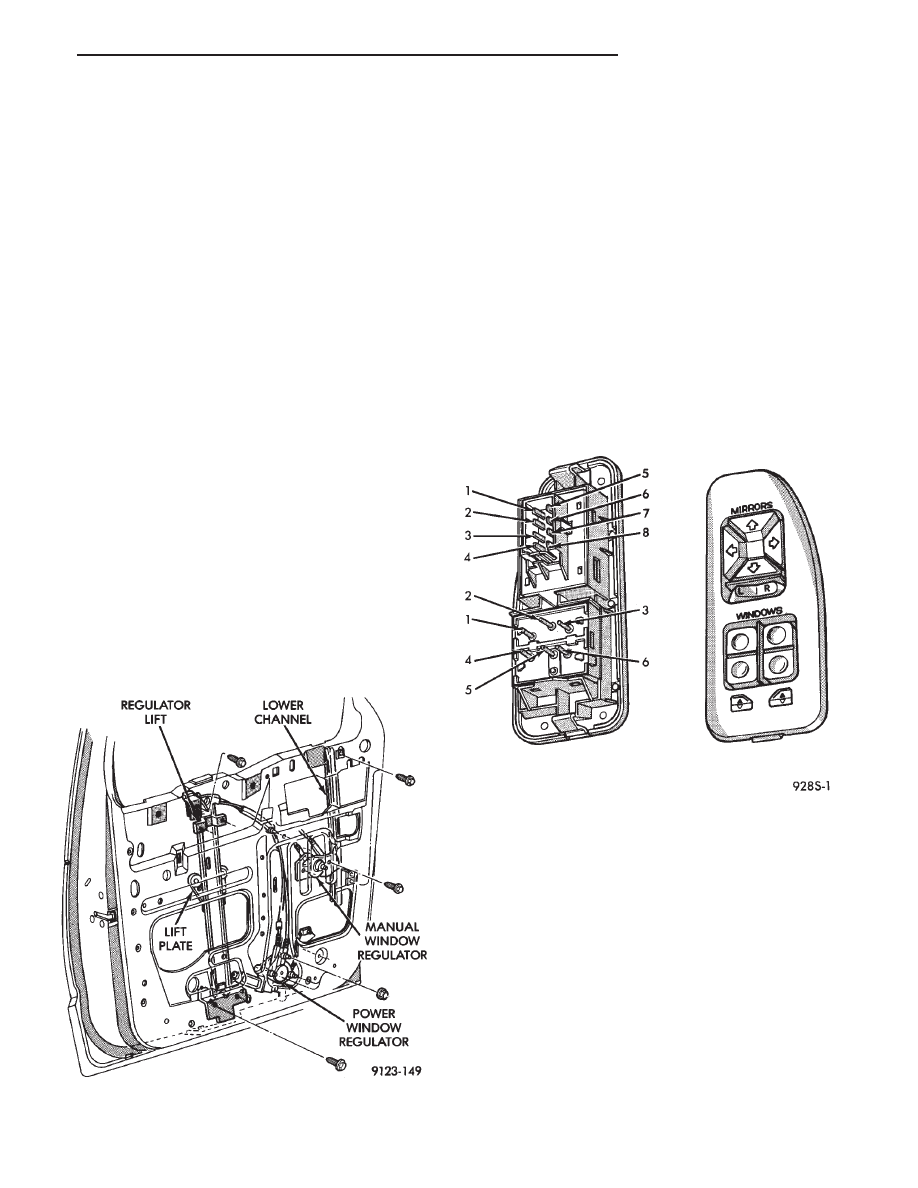Chrysler Town & Country/Voyager, Dodge Caravan, Plymouth Voyager. Manual - part 231

POWER WINDOWS
CONTENTS
page
page
GENERAL INFORMATION
. . . . . . . . . . . . . . . . . . 1
MOTOR REPLACEMENT
. . . . . . . . . . . . . . . . . . . 2
POWER VENT WINDOWS . . . . . . . . . . . . . . . . . . 3
POWER WINDOW CABLE HOUSING/MOTOR
REPLACEMENT
. . . . . . . . . . . . . . . . . . . . . . . . 2
SWITCH CONTINUITY TEST
. . . . . . . . . . . . . . . . 1
SWITCH VOLTAGE TEST . . . . . . . . . . . . . . . . . . . 1
VENT CABLE AND CRANK MECHANISM
. . . . . . 4
VENT WINDOW MOTOR REPLACEMENT
. . . . . . 5
VENT WINDOW MOTOR TEST
. . . . . . . . . . . . . . 3
VENT WINDOW SWITCH TEST . . . . . . . . . . . . . . 3
WINDOW MOTOR TEST
. . . . . . . . . . . . . . . . . . . 2
GENERAL INFORMATION
Window lift motors are of the permanent magnet
type. A positive and negative battery connection to
either of the two motor terminals will cause the motor
to rotate in one direction. Reversing current through
these same two connections will cause the motor to
rotate in the opposite direction.
Each individual motor is grounded through the mas-
ter switch by a black wire attached to the left cowl
panel.
It is necessary that the window be free to slide up
and down in the glass channels or tubes and tracks. If
the window is not free to move up and down, the
window lift motor will not be able to move the glass.
To determine if the glass is free is to disconnect the
electric window regulator lift plate from the glass (Fig.
1). Then slide the window up and down by hand.
SWITCH VOLTAGE TEST
The following wiring test sequence determines
whether or not voltage is continuous through the body
harness to switch (Fig. 2).
(1) After removing switch from trim panel for testing
purposes, carefully separate multiple terminal block
on wiring harness from switch body.
(2) Connect one lead of test light to black wire
terminal and touch other test light lead to tan wire
terminal.
(3) If the test light comes on, the wiring circuit
between the battery and switch is functional.
(3) If light does not come on, check 30 amp circuit
breaker or for a broken wire.
SWITCH CONTINUITY TEST
To check the switch, remove the switch from its
mounting position. Using an ohmmeter, and referring
to the Switch Continuity (Figs. 3 and 4), determine if
continuity is correct. If there is no continuity at any one
of
the
switch
positions,
replace
the
switch.
Fig. 1 Power Window Regulator
Fig. 2 Mirror/Window Switch
.
POWER WINDOWS
8S - 1